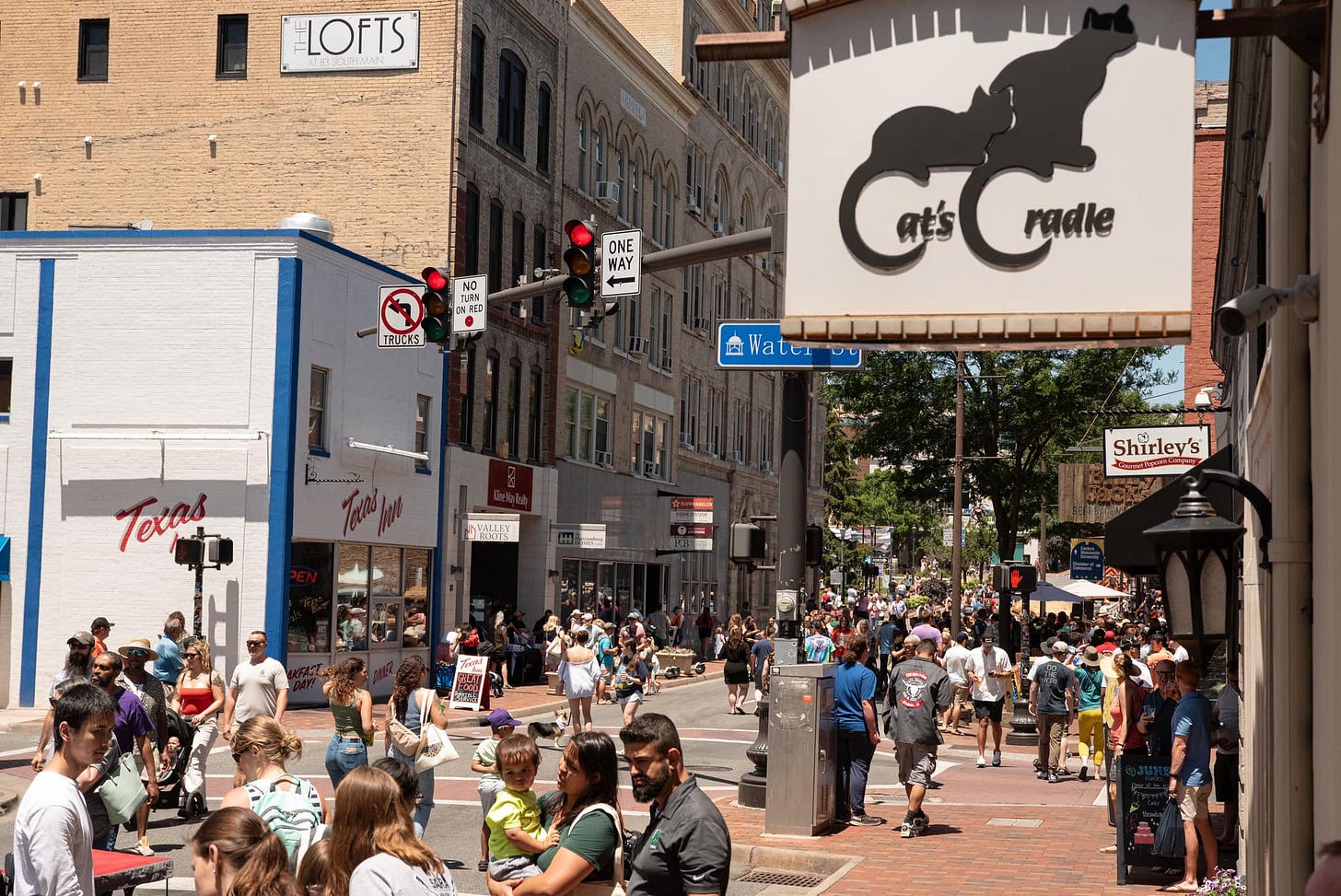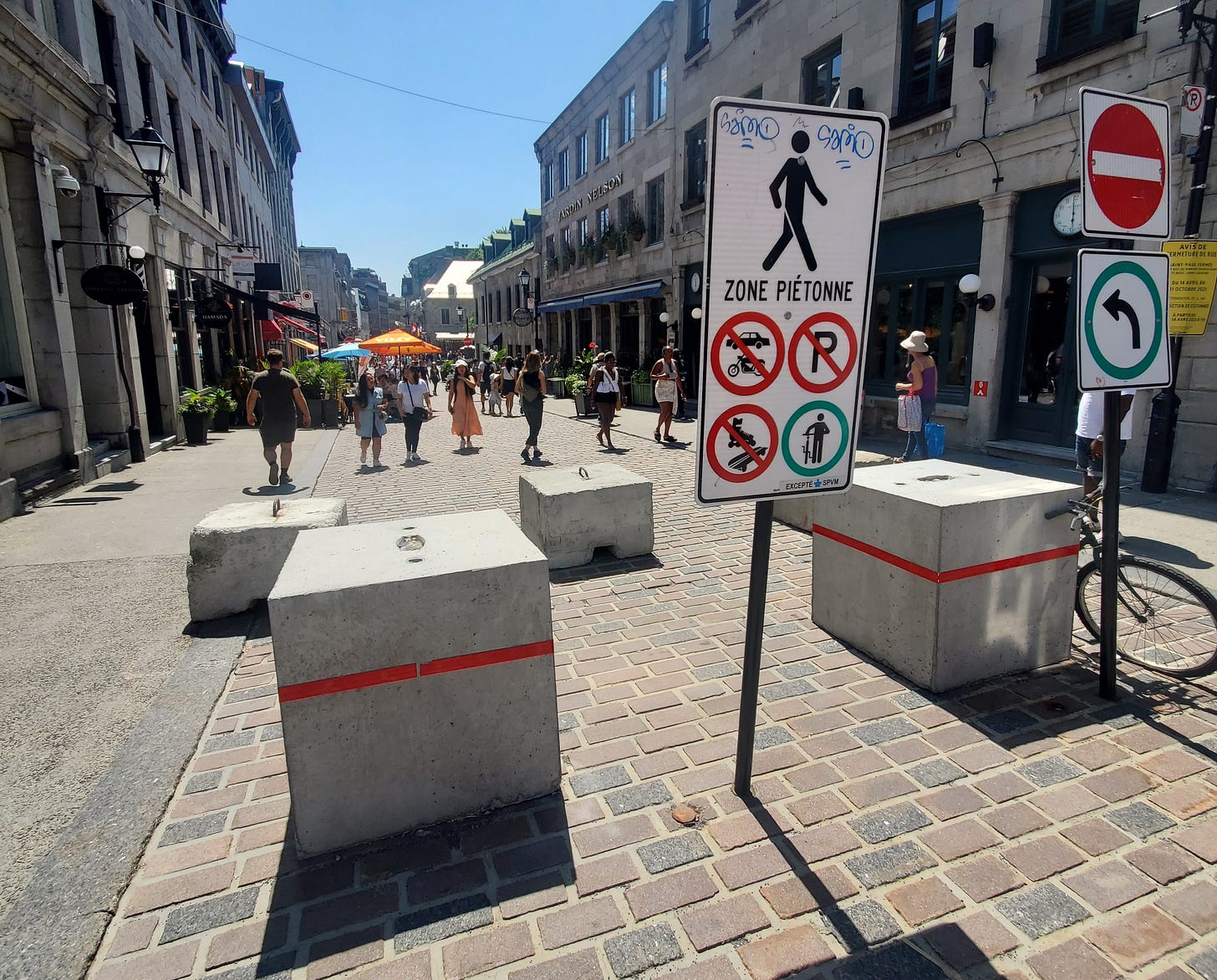Traffic-restricted festivals can help us reimagine our city
What if we prioritized people instead of cars on our downtown streets more often?

Harrisonburg Downtown Renaissance organized the fourth annual Best.Weekend.Ever. festival which took place on Saturday, June 15. HDR and the festival volunteers did an impressive job putting the event together. Vendor mini-markets and live music performances were set up in alleyways other spaces downtown that might otherwise go unnoticed and unvisited. Main Street was closed to car traffic, and locals got around on foot.
As I walked from the north end to the south end of downtown, I was struck by how laid back and pleasant the whole experience was, not needing to constantly be on the lookout for trucks and SUVs barreling down the street. Parents pushed strollers down the middle of the street, children played games and rode bikes, artists and vendors engaged in social interactions in spaces devoted solely to car storage 99.9% of the time.

We have sacrificed far too much — human casualties, environmental harm, and social isolation to name a few — at the altar of car-centric planning. Festivals like Best.Weekend.Ever. can serve as a reminder that our built environment doesn’t have to be this way. If we’re willing to reimagine who and what streets are for, traffic-restricted festivals like this can become prefigurative prototypes of what we want our city to look like. These temporary mock-ups can challenge us to ask why and what if. Why have we given these large personal transportation products such an exalted place in our communities? What if we closed down our streets to automobile traffic more often? What if Water Street had retractible bollards, and was closed to car traffic every weekend? What if street closures were more regular, and local restaurants and organizations could set up dining, art, and vendor areas on the street?
This website uses Google Street View images and an AI image generator to “Dutchify” any street and make it look a little more like a street in Amsterdam. The AI results can be very hit-or-miss, but they can also be a helpful tool to help us imagine possibilities we’re missing in our own neighborhoods. Instead of massive swaths of asphalt just for cars, what if we had walking paths with trees, flowers, and shrubs? Here’s one looking east on Water Street, near Urban Exchange.

When my spouse and I traveled to Montreal last year, we walked and biked through several city streets that had been pedestrianized. Our experience in former car parking spaces-turned outdoor dining areas made it hard to imagine why any city would willingly surrender their downtown streets entirely to cars.
Addison Del Mastro recently put it like this:
A city isn’t something we ever designed, per se; it’s the natural form that we built, throughout history, across cultures, over and over again. And even today, after a long interlude of car-dependent land use and car-centric life, we can recognize that form as something basically natural and inoffensive.
These seasonal closures have been such a success, Montreal has since closed off more streets to cars. But Montreal is just one example of reclaiming spaces for people. As I travel, I’m always looking at what other cities are doing — what works and why. Here are some former parking spaces turned into outdoor dining in Lawrence, Kansas.
These seasonal or sometimes temporary installations can be auditioned for a time, adapted, made more permanent, or removed altogether. We saw an example of this recently in the church parking lot off Federal Street. Harrisonburg already temporarily shuts down streets for events. Why not do it more often? Perhaps we could start with one block of East Water Street. We could figure out what works and at what times. Questions like “what about delivery trucks or emergency vehicles” have answers. Many other cities including Staunton and Winchester have done it. “But what about” is not an excuse to not try it.
One last thought on reimagining our city as it relates to recent summer festivals. I hadn’t attended Red Wing Roots Music Festival since before the pandemic. Last weekend I returned to a much bigger festival, and I noticed far more people using bikes than in previous years. The expansion of new annex campsites at the periphery appears to have led to an increase in the number of people riding bikes to and from their tent to the shows. The distances between destinations are great enough that it’s almost too far to walk in the heat, so many festival-goers ride bikes. The bike parking sections looked like a scene from Copenhagen or the Netherlands.
Driving automobiles during the festival is discouraged, and car parking is heavily regulated and managed. In some campsites, campers paid $50 more to camp right next to their car, compared to the price for unloading and parking farther away. None of the car storage is free, because space is limited and land is valuable. Even general admission parking passes to park outside the gate cost $10. Every parked car is space that can’t be used for tents, vendors, picnic tables, or other gathering places.
When it’s inconvenient to drive, costs money to park, yet the distance feels a little too far to walk, that’s where bikes come in. Bikes fill the gaps between driving and walking, and bike parking takes up a small fraction of the space needed to park automobiles. People simply intuit this and act accordingly. In places where cars have been de-prioritized, pedestrians and people on bikes dominate the space. We should apply these principles to downtown Harrisonburg.
All of these recent and local examples are reminders that other forms of built environment, transportation, and urban planning are possible right here in Harrisonburg. We’re already doing it. All the pieces are there. It’s up to us to put it all together to build a more vibrant, sustainable future for our city.






